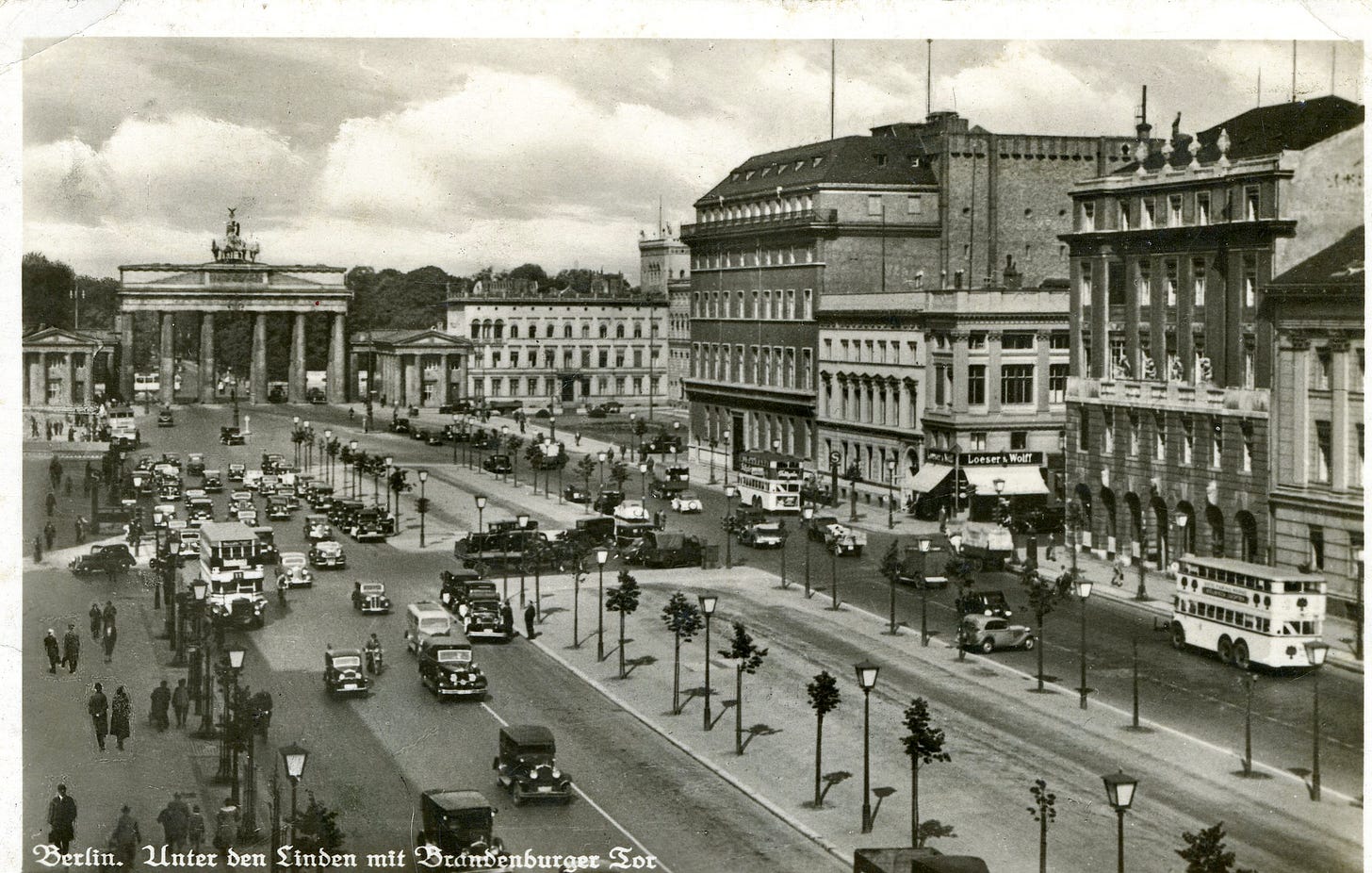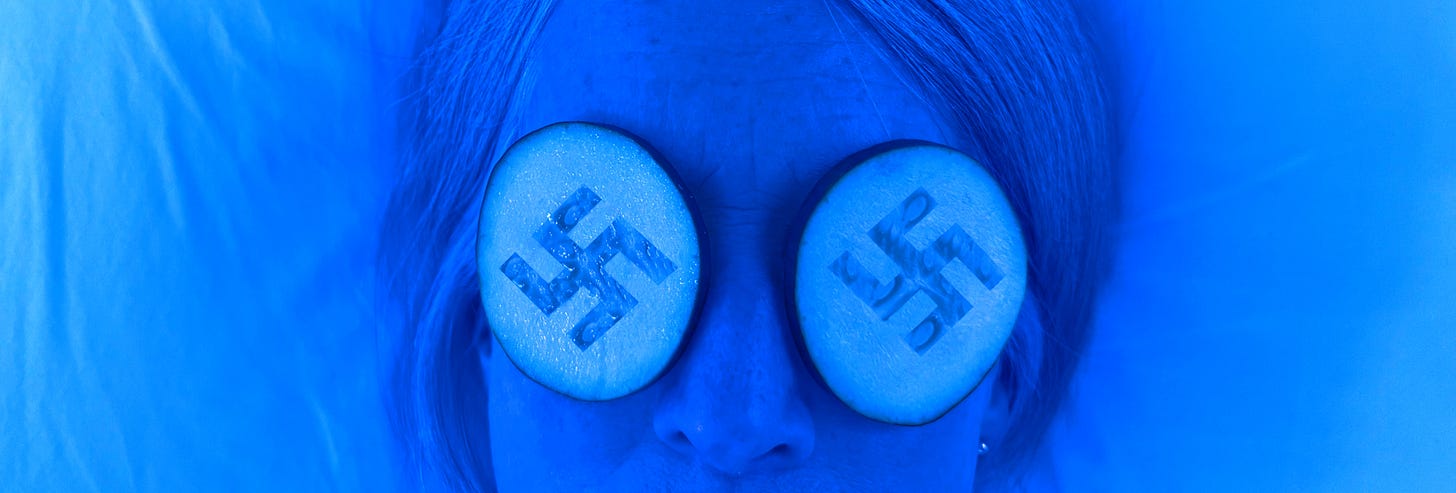Dreams come back to haunt us
A new translation reflects how people under authoritarianism process reality.
Reviewed in this article:
The Third Reich of Dreams:
The Nightmares of a Nation
Princeton University Press, April 2025
by Charlotte Beradt
Damion Searls, trans.
Our present moment is reminding us that the human response to repression resides not only in practical action—or the lack of it—but also in the subconscious. While some authoritarians may be enjoying their triumphs today, their subjects are undergoing psychological changes, many of which may be too complex and subtle to be understood right away.
In previous eras in which ordinary people feared speaking freely, even to themselves, dreams have provided glimpses into how we process hostile realities. So the republication in April by Princeton University Press of a collection of dreams recorded in 1930s Germany couldn’t be more timely: The Third Reich of Dreams: The Nightmares of a Nation by Charlotte Beradt. Good dreams, like good literature, don’t get old; this collection has preserved its full telling impact.
Beradt was a journalist who began recording dreams in 1933 and worked at it until she was forced to leave Nazi Berlin in 1939. Her method was simple—she would ask virtually all those she met to recount their dreams. She collected hundreds, reflecting how some Germans were “processing” their developing political reality. Afraid or unwilling to resist in their waking lives, many dealt with it in their sleep.
As her task became more dangerous, Beradt hid her notes inside books she sent with friends traveling abroad. She was eventually reunited with her writing in New York, where she joined an émigré salon frequented by her friend Hannah Arendt and others from the German exile community. While debating and despairing about their situation, she also worked as a hairdresser.
Although Beradt categorized dreams into various rubrics or themes, many were united by common threads of anxiety, fear and revulsion. They expressed the desire for escape or denial, helplessness or compromise, to fit in, hide or flee. All the dreams in her collection are difficult ones.
Here’s a telling one:
I was taking a walk in Switzerland with two blond navy officers. A large, very
ugly Jewish woman sank to the ground in front of a shop window. Her
husband rushed over and said: “Rosa, what’s wrong?”
Only when they walked off past us, clutching each other tight, could we truly
see how Jewish and ugly they were. I could feel my two companions shudder
with disgust. They didn’t say anything, but I did. Blurting out, they are hideous
to me, I can’t stand the look in their eyes, but you’ve forced me into company
with them, literally beat me into being one of them. I am still not one of them,
though. But you, what do I have in common with you? You, who look like
me—I look like them, like you—what’s that got to do with me? At most, I
might go to bed with one of you…
This was the dream of a Jewish woman. It reflects her desire to hide her Jewishness, turn it into some other “color” that would enable her to belong to the majority in order to survive.
Another example:
Goebbels came to my factory. He had all the employees line up in two rows,
left and right, and I had to stand between the rows and give a Nazi salute. It
took me half an hour to get my arm raised, millimeter by millimeter. Goebbels
watched my efforts like a play, without any sign of appreciation or displeasure,
but when I finally had my arm up, he spoke five words: “I don’t want your
salute.” Then he turned around and walked to the door. So there I was in my
own factory, among my own people, pilloried with my arm raised. The only
way I was physically able to keep standing there was by fixing my eyes on his
clubfoot as he limped out. I stood like that until I woke up.
This dream appears to demonstrate an “unwilling willingness” to be part of a collective enveloped in the winning ideology (Goebbels and Hitler appear in many dreams). Power unites most of the dreams in the book.

For this Russophone, Beradt’s obsession with dreams rings many bells at once. I’m reminded above all of the notable writers of “Soviet surrealism”—the poets Daniil Kharms, Konstantin Vaginov and Pavel Zaltsman, whose creative output and diaristic works are permeated by dreams.
In Vaginov’s last novels, the emergence of dream collectors signifies the USSR’s transition from the less repressive late 1920s—when some private enterprise under early Bolshevism was tolerated under Lenin’s New Economic Policy—to the terror of high Stalinism in the 1930s. Vaginov describes collectors gathering graffiti, pornography, kitsch, relics and dreams at a time family and social bonds were being severed. When almost any divergence from totalitarian uniformity is punishable by arrest or death, dreams become a natural outlet for dissidence or at least independence of thought.
Pavel Zaltsman, a poet and an artist of DADA inclinations, wrote in 1929:
It was an interesting dream... I climbed down endless passages and rotten-
potato-smelling kitchens, went into scary rooms full of chemical vials and
pipes. There was no one everywhere, and finally I came to a twisted iron
staircase, and I needed clothes.
I decided to run from here but I had to get through the basement. The cellar
was dirty and dark, you couldn’t step in the mud—it was mire, you had to
sneak along narrow stone paths, sticking to the wet walls. On the walls there
were terrible blue shadows of dark fish swimming in the damp air of the cellar.
And then I saw an old woman in the depths of the cellar by a black vat. I
rushed away, she followed me with a gaunt, yellow striped stick. I stopped
in the passage, and she called out to me in a thin voice. I tried to hide in a
cupboard with broken dishes and a battered door, which stood inopportunely
on the stairs.
I felt that my legs were giving out and I could not run any further. The old
woman, on the other hand, began to climb slowly up the weak, prickly stairs.
It’s no coincidence Beradt’s book had an influence in the Soviet Union from the time of its publication in 1966. It inspired a 2009 study of Soviet dreams by Irina Paperno, a student at Estonia’s University of Tartu and later professor at UC Berkeley, Stories of the Soviet Experience: Memoires, Diaries, Dreams.
One of the differences between her collection and Beradt’s is in the method of collecting. Beradt did her research in an era of diminishing freedom; she polled friends, neighbors and colleagues, and relied on her others to help widen her search. She explored the approaching unfreedom until freedom was gone.
Nothing like that was possible in the Soviet 1930s—anyone walking around Moscow or Leningrad inquiring what someone had dreamed about the previous night would have risked denunciation and arrest. Nevertheless, people chronicled their dreams in diaries despite the danger.
Paperno examines dreams set down on paper by writers including Lidiya Chukovskaia and Mikhail Prishvin, and also those of ordinary Soviets, even Stalin himself. They’re not that different from the German dreams—fear and desire for power seem to be universal. The biggest difference is that the citizens of Weimar Germany appeared to reflect more surprise by how they were being robbed of their freedom. Freedom in Russia was, and still is, a more unattainable utopia.
When I was recently teaching Chukovskaia’s novella Sofia Petrovna—about Stalin’s Great Purge—in my American classroom, I found myself experiencing physical horror from talking about the Soviet denunciations and collaboration of the 1930s while reading about the appearance of similar dynamics here in the daily news.
The Third Reich of Dreams returns to us as a warning that things we thought were in the past are resurfacing, not least in our dreams.
Polina Barskova is a scholar and a poet, author of 13 collections of poems and three books of prose in Russian. Her collection of creative nonfiction, Living Pictures, received the Andrey Bely Prize in 2015 and is forthcoming in German and English translations. She teaches at UC Berkeley.


